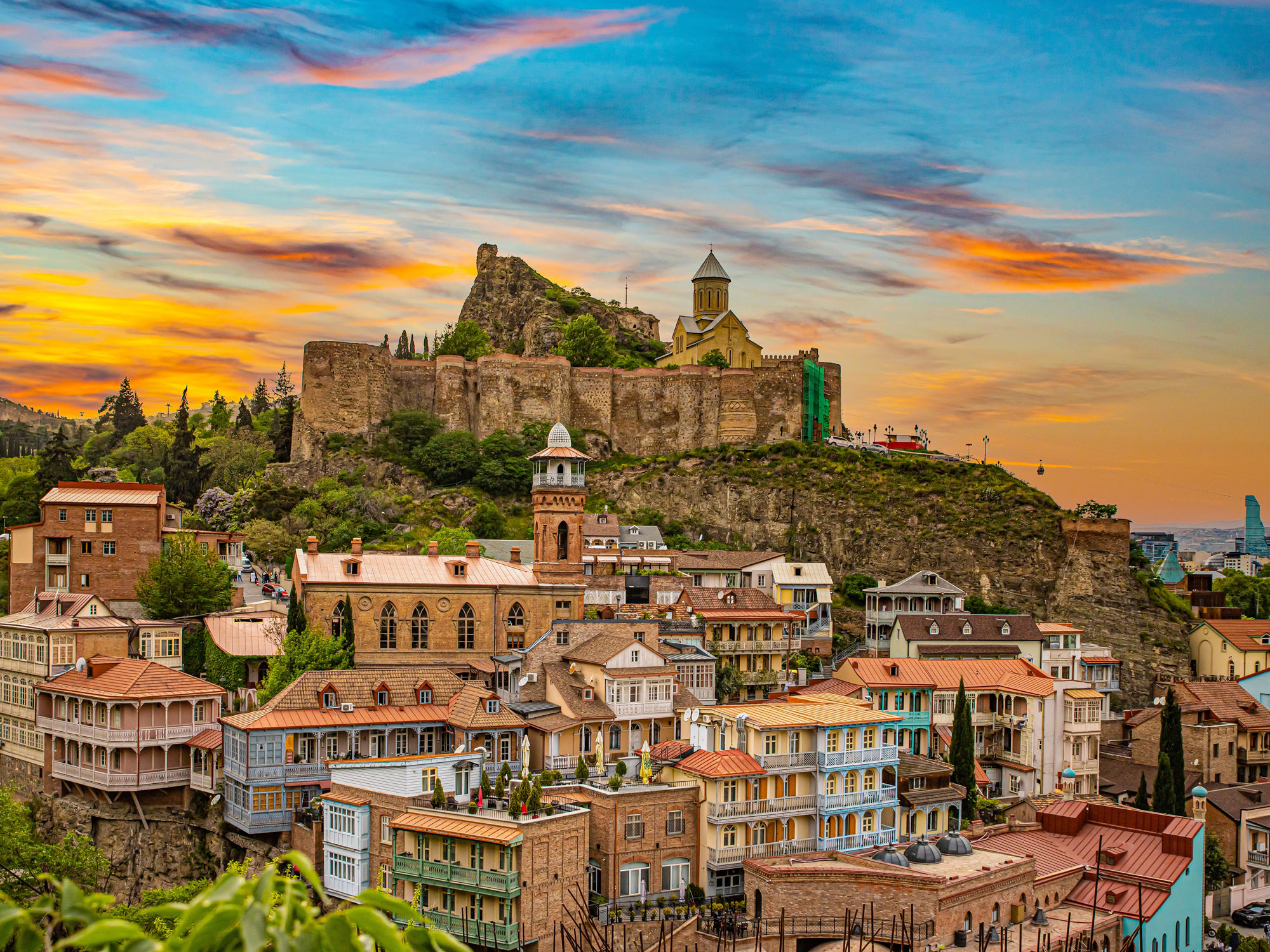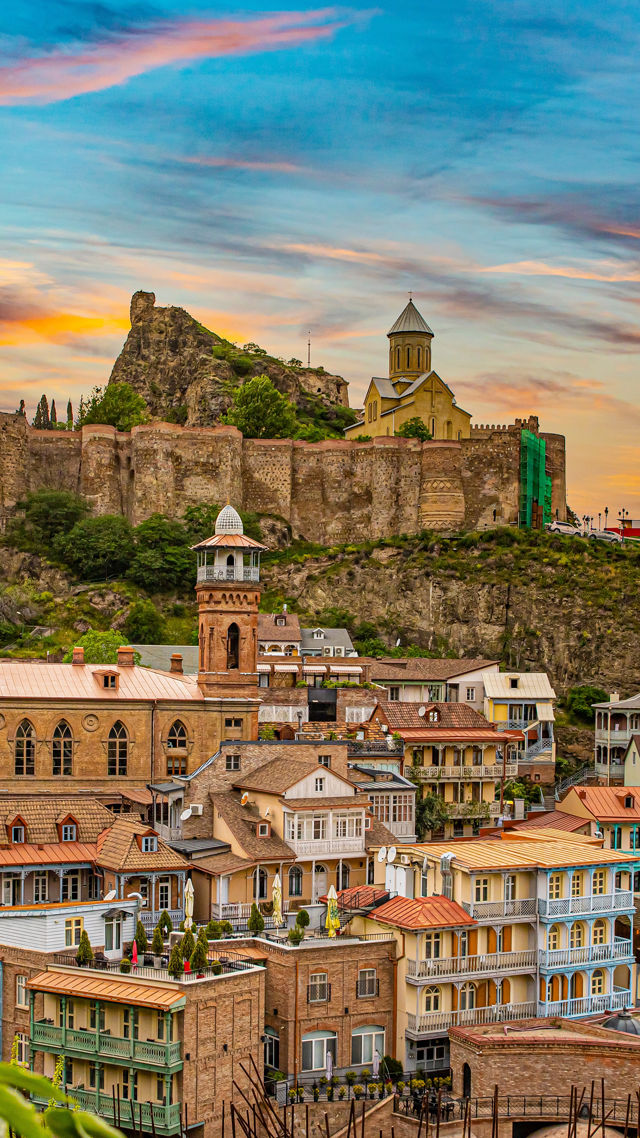About Tbilisi
Location & Geography
Situated in the valley of the Mtkvari River, surrounded by hills and mountains.
Strategically located on the historic Silk Road route, connecting East and West.
The name "Tbilisi" comes from the Georgian word "tbili" meaning warm, a reference to the area's natural hot springs.
Climate
Humid subtropical climate
-
Summers: Hot and dry (avg. 30°C / 86°F in July)
-
Winters: Mild with occasional snow (avg. 2–5°C / 36–41°F in January)
Cityscape & Architecture
Tbilisi features a patchwork of architectural styles:
-
Old Town (Dzveli Tbilisi): Wooden balconies, narrow alleyways, sulfur bathhouses.
-
Soviet-era blocks: Brutalist architecture from the 20th century.
-
Modern landmarks: The Bridge of Peace, Rike Park Concert Hall, and the ultra-modern Public Service Hall.
-
The city is built on terraced hillsides, offering sweeping views.
Cultural & Historical Highlights
-
Narikala Fortress: Ancient citadel overlooking the city.
-
Tbilisi Sulphur Baths: Historic bathhouses in Abanotubani, the city's original settlement.
-
Sameba Cathedral: One of the largest Orthodox churches in the world.
-
Mtatsminda Park: Amusement park and panoramic viewpoint atop a mountain.
-
Rustaveli Avenue: Main cultural and political artery of the city.
Culture & Lifestyle
A hub for art, music, design, and cuisine.
Famous for its lively café culture, wine bars, underground electronic music scene, and theaters.
Home to national institutions like the Georgian National Museum, Opera House, and Tbilisi State University.
The city hosts international events such as:
-
Tbilisi Fashion Week
-
Open Air Music Festival
-
Tbilisi International Film Festival
Food & Wine
Known for Georgian cuisine, including:
Khinkali (dumplings), Khachapuri (cheese-filled bread), Lobio (bean stew)
Tbilisi is also a gateway to Georgia’s 8,000-year-old wine culture. Wine bars and cellars are abundant, offering tastings of traditional Qvevri wines.
Transportation & Accessibility
Tbilisi International Airport (TBS): Links the city to major hubs in Europe, the Middle East, and Central Asia.
Minibuses (marshrutkas), buses, and Bolt taxis are widely used.
Walking-friendly central districts like Vera, Sololaki, and Vake are popular with locals and expats.





